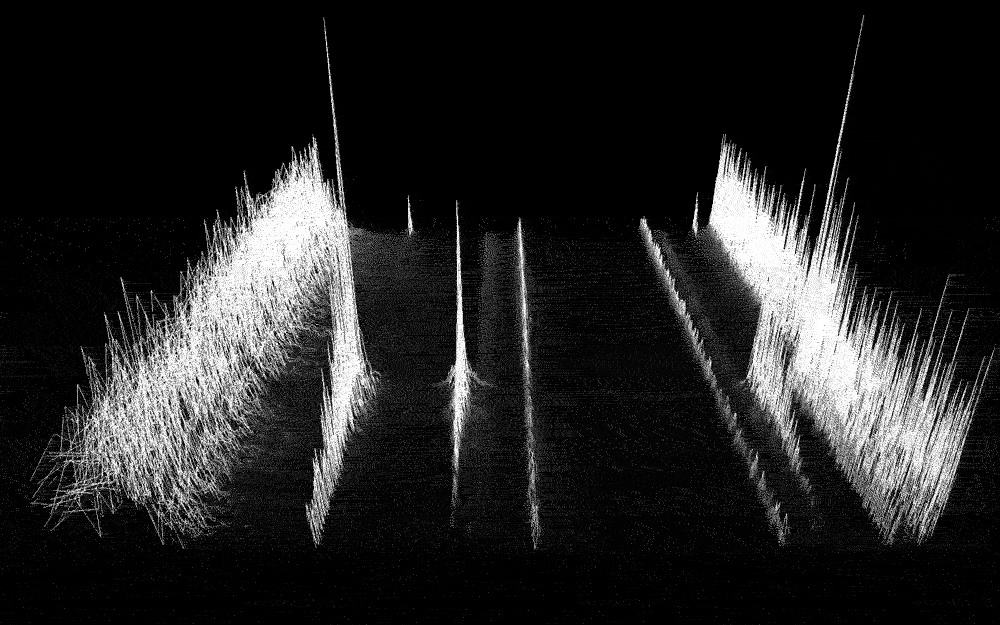Capital Artifacts: Critical Structures of Auralization
ABSTRACT
Auralization connotes the imagining of an aural event, distinct from sonification, which is a method of representing information via the mapping of datum to a composition of audible signifiers. Aural systems, built upon structures in psychoacoustics, provide a set of practical and conceptual tools that inform our sonic imaginary. New notions of transmission, translation, and fidelity are found at the intersection of computer music and information display. These artistic processes offer hybrid communicative capacities through their interfaces, which span built and virtual environments. Operating on the outer thresholds of perception and calculation, the efficacy of these intermodal strategies are contextualized by concepts of noise found in the aesthetic discourse of ‘glitch’. Glitch refers to an unpredictable error, but it has become increasingly unclear if it occurs due to external systematic breakdown or internal sensory capacities. A perceptual hiccup may just as easily be the artifact of computational error or compression as a demarcation of individual thresholds for detecting difference. White noise is seemingly the most unique sound in its complete variety, but to human ears its nuance is imperceivable. By making noise legible this thesis constructs an aural ecology for expanding semantic and aesthetic discourse within the International Community for Auditory Display. A critical archeology of methods of transmission, sonification, and audiovisual art provide a historical framework expanding both design and curatorial practice.
Hyperminimalist work by composer Ryoji Ikeda provides a case study for art practices that disseminate popular notions of glitch through audiovisual information display. Ikeda constructs immersive environments of auditory display within museum space and the urban stage of the city. In this context, noise is the materia prima of theories of information and performance practices, inscribed with the effects of entropy and carrying embedded, masked meaning. This project seeks a critical language which expands notions of auditory display in order to examine the productivity of noise-based methodologies—artifacts of glitch being the referent and object for the perception of difference. How are we to understand the cross-disciplinary influence of auralization relative to the social aspects of perceptual capital and cultural capital? What are the functional implications of interfaces for auditory display in institutionalized art spaces and public settings? Striving for a lossless experience is impossible due to an aural architecture modulated ontologically by filtering and error. Steganography is the art of concealing, embedding one sound, image, or file within another. Communication failure can occur due to intended encryption or unexpected interference in exchange. This loss—a system’s lossiness—can be a source of production; one always mediated by unavoidable characteristics of globalized information flow, cultural politics, and sonic perception. Application of these notions to scientific and artistic practice is paramount if we are to decode the future city.
M.S. Thesis Presented to the Faculty of the Graduate School of Architecture, Planning, and Preservation Columbia University in Candidacy for the Degree of Masters of Science in Critical, Curatorial, and Conceptual Practices in Architecture



